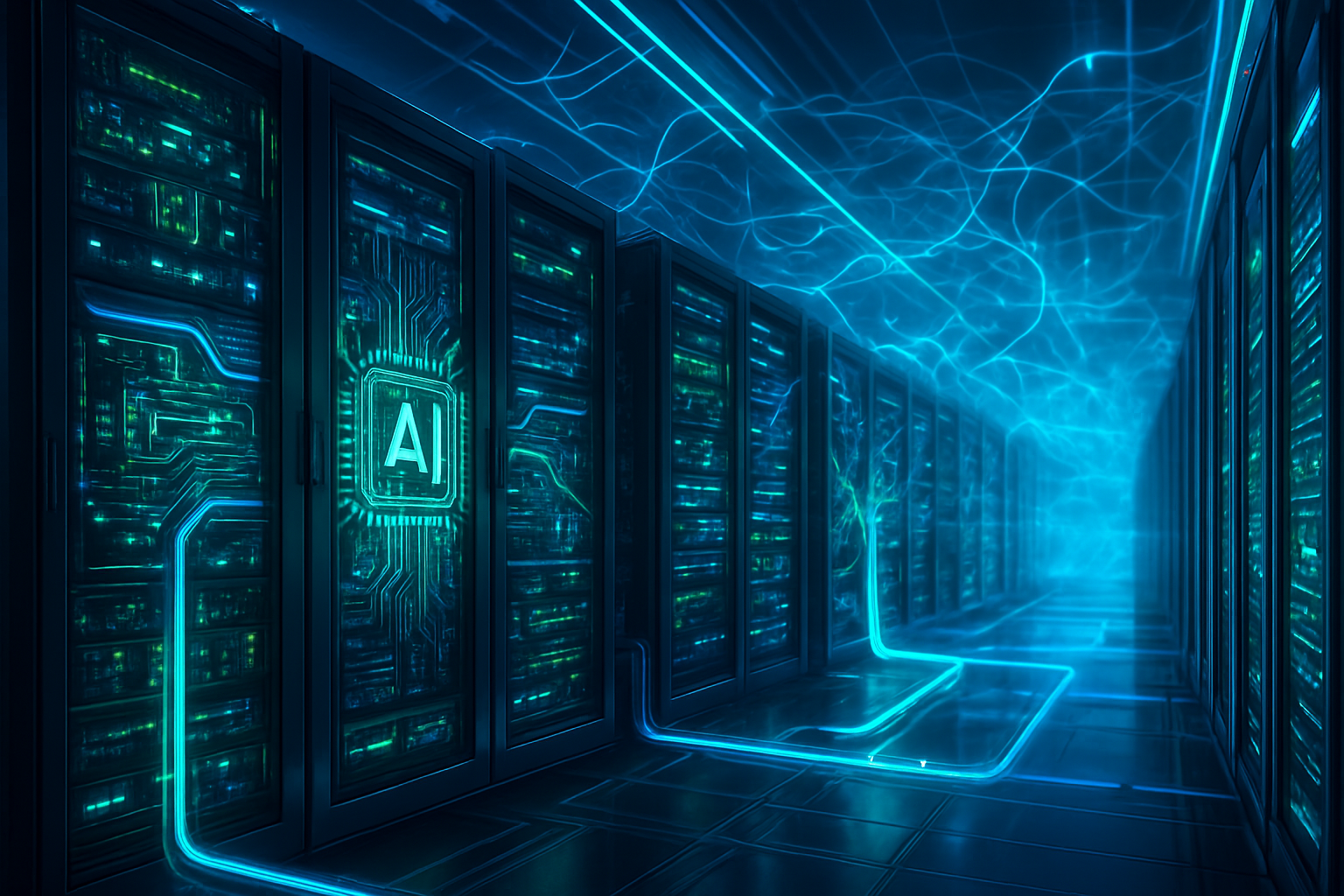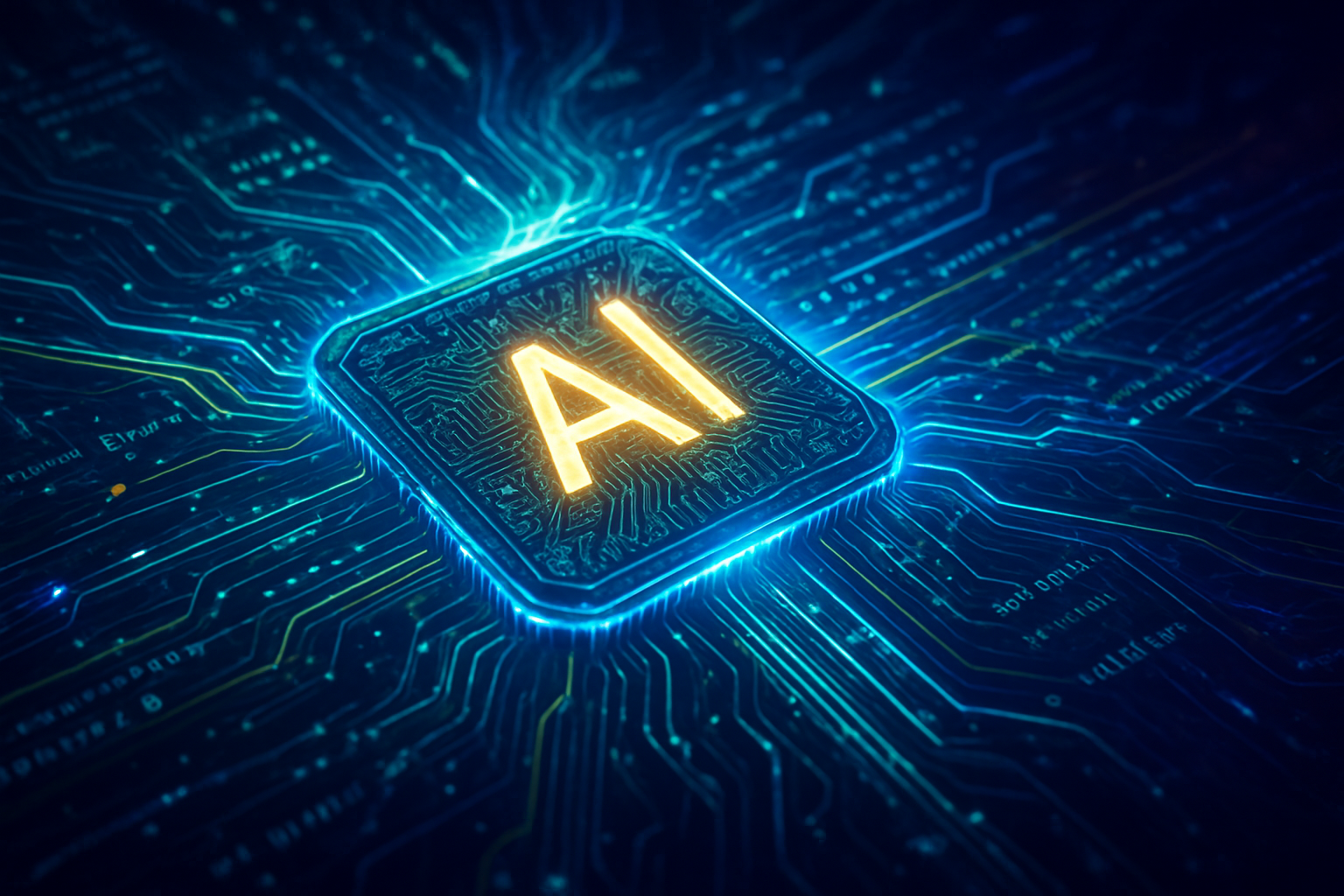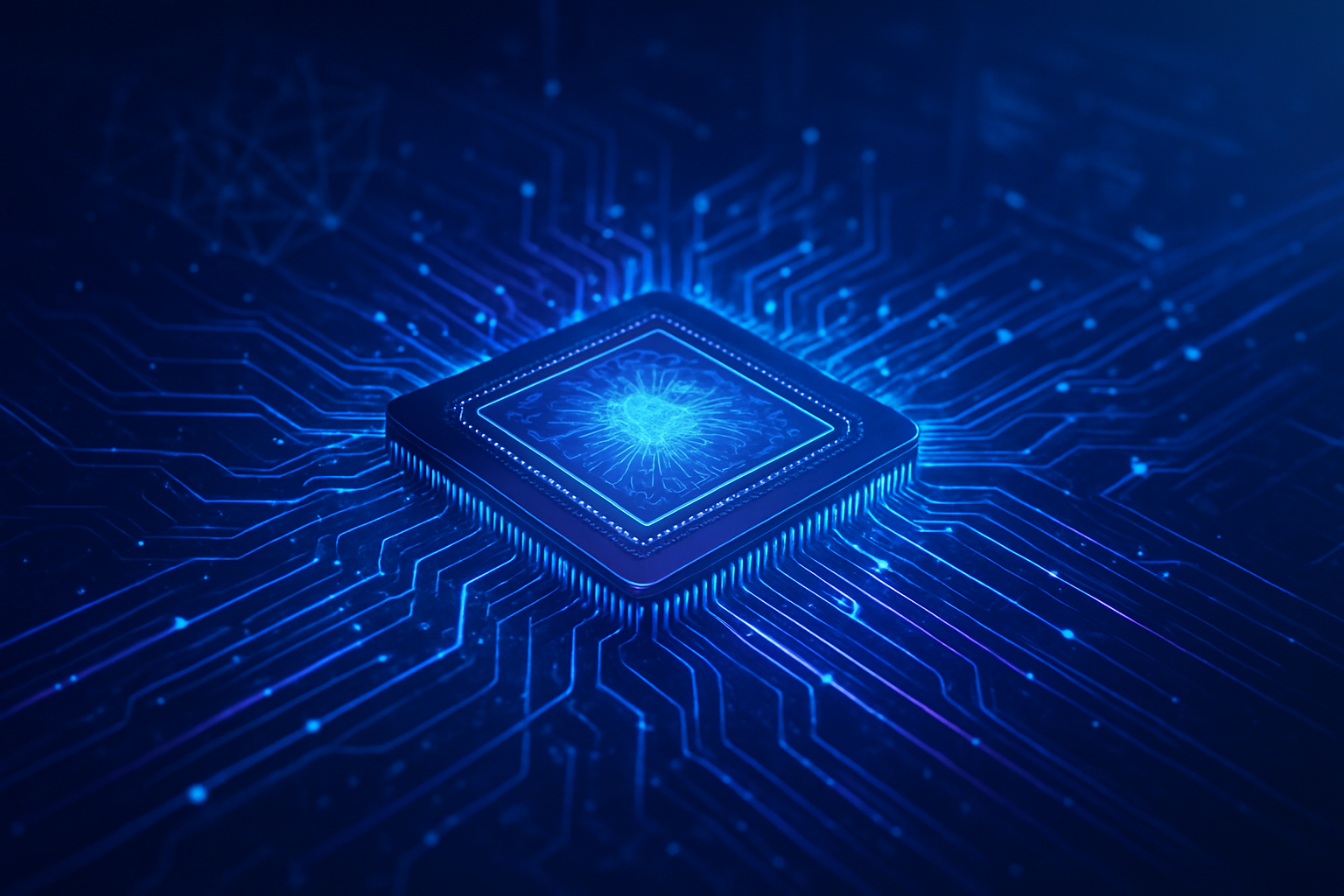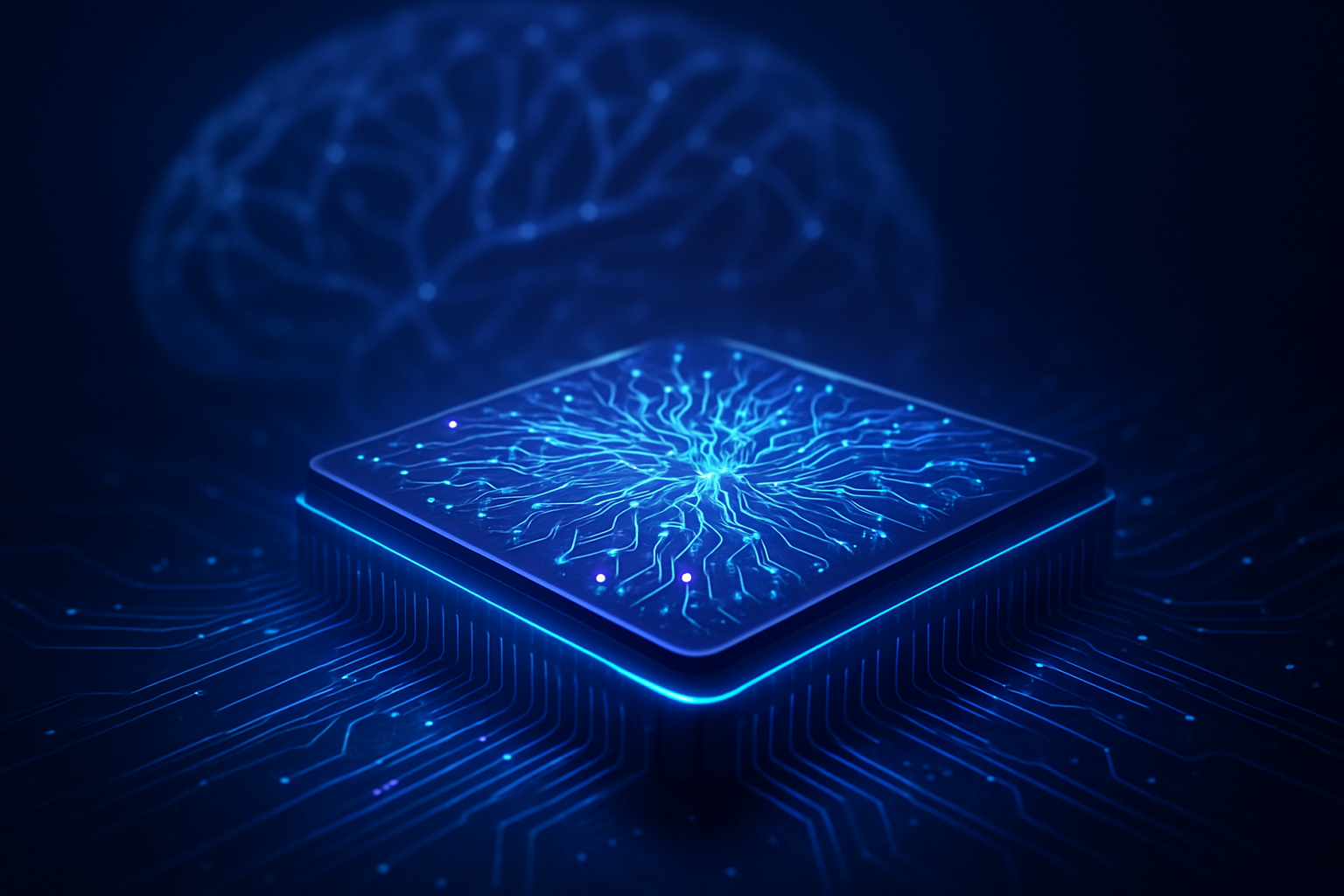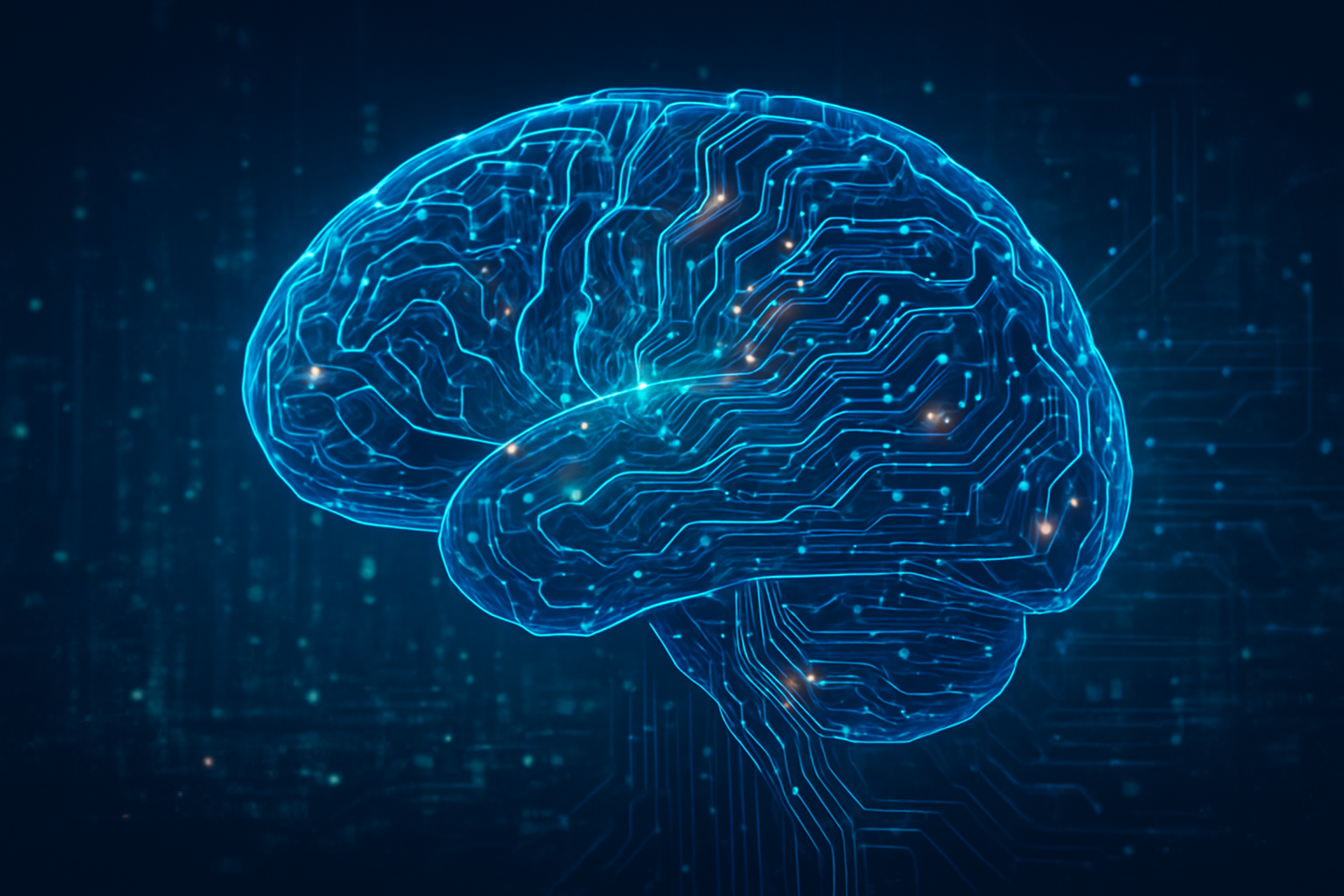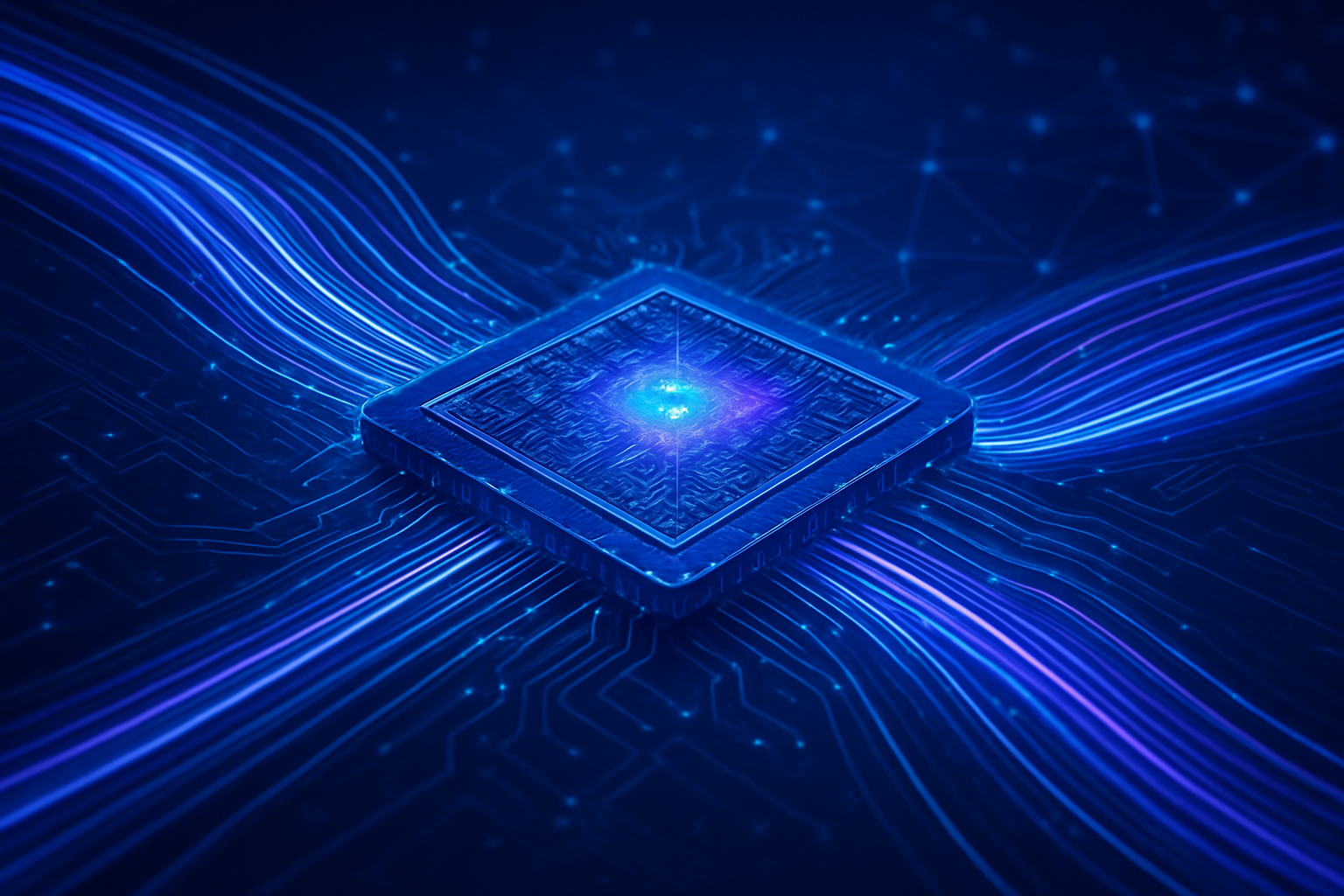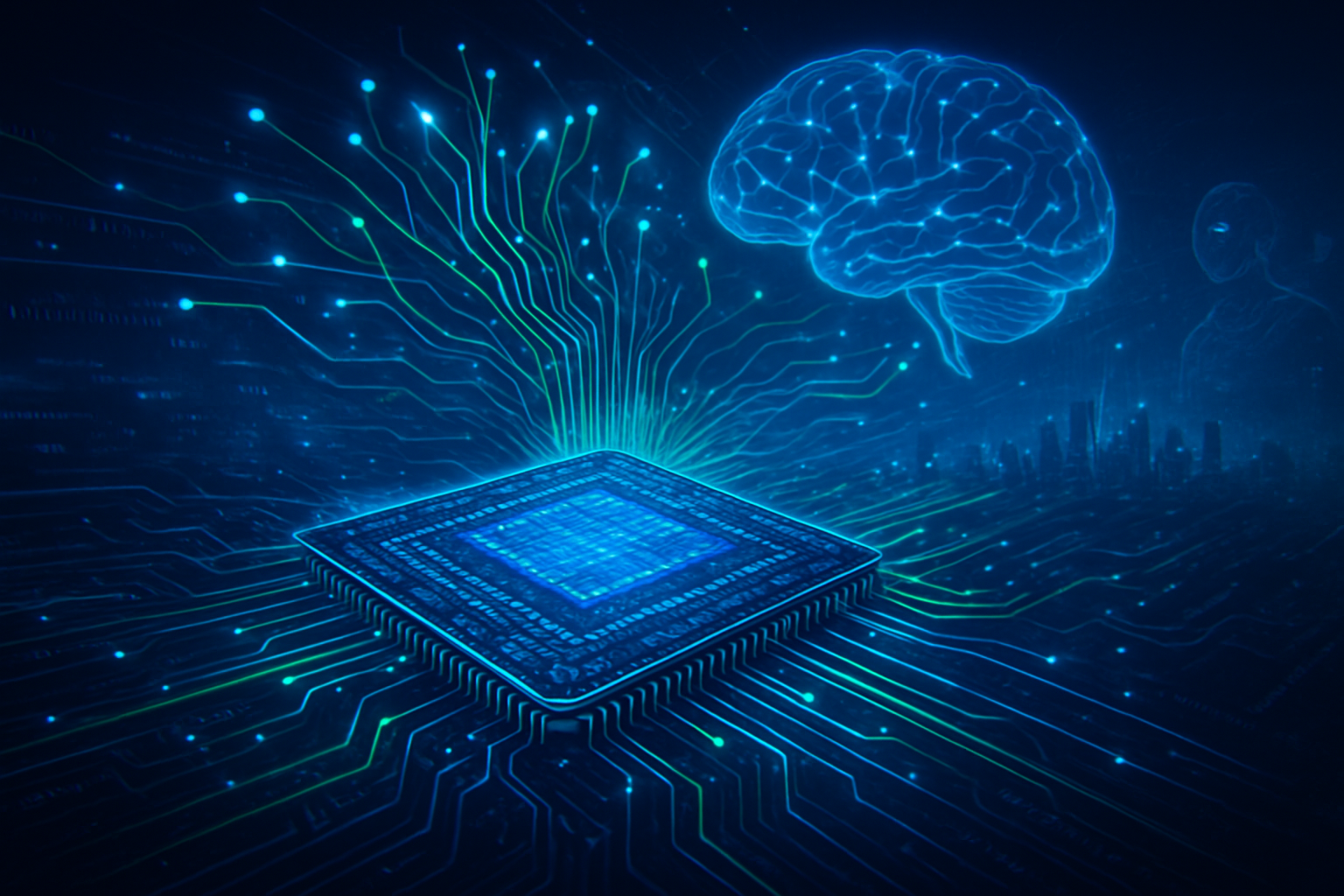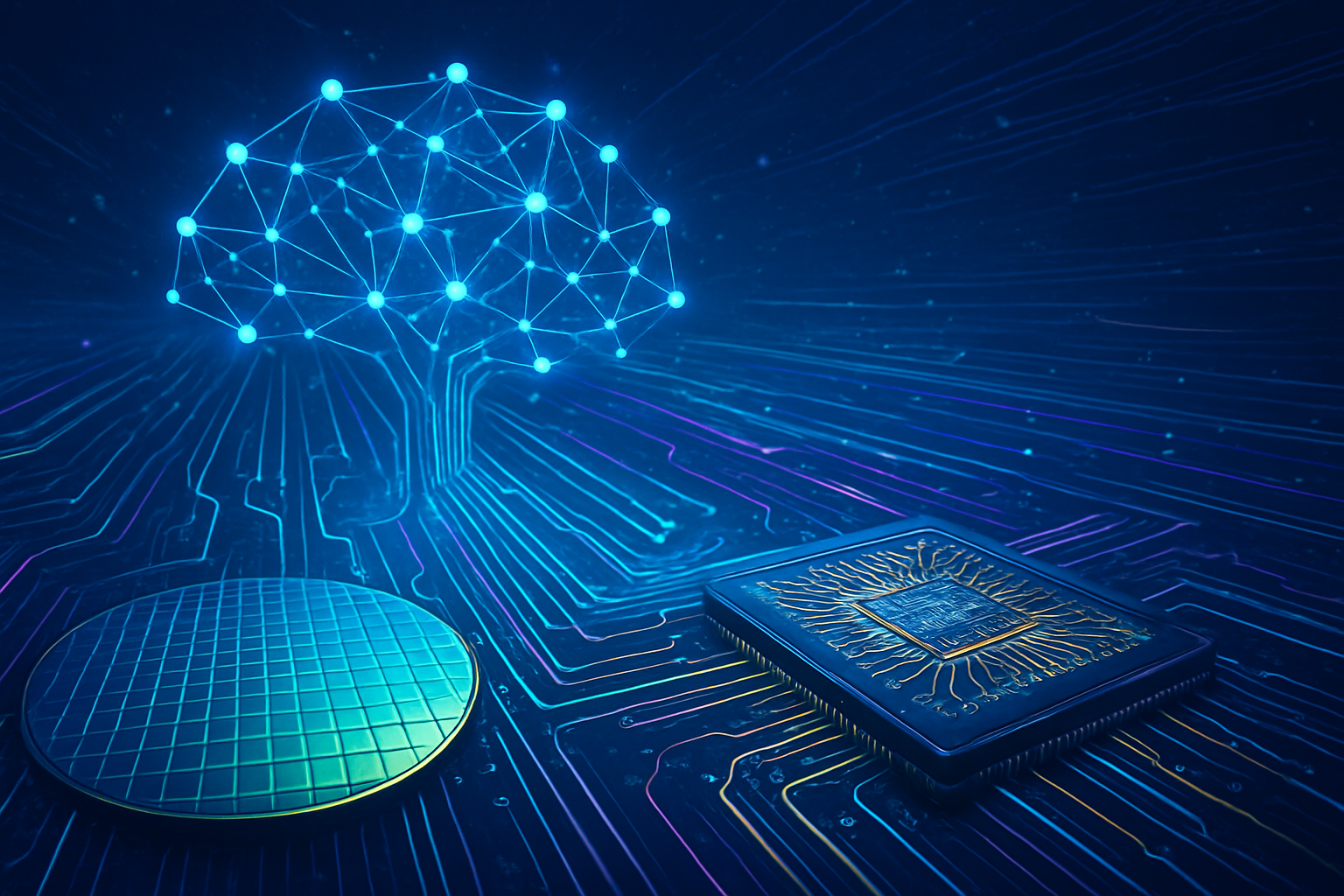The landscape of artificial intelligence is undergoing a profound transformation, driven by an unprecedented surge in specialized AI chips and groundbreaking server technologies. These advancements are not merely incremental improvements; they represent a fundamental reshaping of how AI is developed, deployed, and scaled, from massive cloud data centers to the furthest reaches of edge computing. This computational revolution is not only enhancing performance and efficiency but is also fundamentally enabling the next generation of AI models and applications, pushing the boundaries of what's possible in machine learning, generative AI, and real-time intelligent systems.
This "supercycle" in the semiconductor market, fueled by an insatiable demand for AI compute, is accelerating innovation at an astonishing pace. Companies are racing to develop chips that can handle the immense parallel processing demands of deep learning, alongside server infrastructures designed to cool, power, and connect these powerful new processors. The immediate significance of these developments lies in their ability to accelerate AI development cycles, reduce operational costs, and make advanced AI capabilities more accessible, thereby democratizing innovation across the tech ecosystem and setting the stage for an even more intelligent future.
The Dawn of Hyper-Specialized AI Silicon and Giga-Scale Infrastructure
The core of this revolution lies in a decisive shift from general-purpose processors to highly specialized architectures meticulously optimized for AI workloads. While Graphics Processing Units (GPUs) from companies like NVIDIA (NASDAQ: NVDA) continue to dominate, particularly for training colossal language models, the industry is witnessing a proliferation of Application-Specific Integrated Circuits (ASICs) and Neural Processing Units (NPUs). These custom-designed chips are engineered to execute specific AI algorithms with unparalleled efficiency, offering significant advantages in speed, power consumption, and cost-effectiveness for large-scale deployments.
NVIDIA's Hopper architecture, epitomized by the H100 and the more recent H200 Tensor Core GPUs, remains a benchmark, offering substantial performance gains for AI processing and accelerating inference, especially for large language models (LLMs). The eagerly anticipated Blackwell B200 chip promises even more dramatic improvements, with claims of up to 30 times faster performance for LLM inference workloads and a staggering 25x reduction in cost and power consumption compared to its predecessors. Beyond NVIDIA, major cloud providers and tech giants are heavily investing in proprietary AI silicon. Google (NASDAQ: GOOGL) continues to advance its Tensor Processing Units (TPUs) with the v5 iteration, primarily for its cloud infrastructure. Amazon Web Services (AWS, NASDAQ: AMZN) is making significant strides with its Trainium3 AI chip, boasting over four times the computing performance of its predecessor and a 40 percent reduction in energy use, with Trainium4 already in development. Microsoft (NASDAQ: MSFT) is also signaling its strategic pivot towards optimizing hardware-software co-design with its Project Athena. Other key players include AMD (NASDAQ: AMD) with its Instinct MI300X, Qualcomm (NASDAQ: QCOM) with its AI200/AI250 accelerator cards and Snapdragon X processors for edge AI, and Apple (NASDAQ: AAPL) with its M5 system-on-a-chip, featuring a next-generation 10-core GPU architecture and Neural Accelerator for enhanced on-device AI. Furthermore, Cerebras (private) continues to push the boundaries of chip scale with its Wafer-Scale Engine (WSE-2), featuring trillions of transistors and hundreds of thousands of AI-optimized cores. These chips also prioritize advanced memory technologies like HBM3e and sophisticated interconnects, crucial for handling the massive datasets and real-time processing demands of modern AI.
Complementing these chip advancements are revolutionary changes in server technology. "AI-ready" and "Giga-Scale" data centers are emerging, purpose-built to deliver immense IT power (around a gigawatt) and support tens of thousands of interconnected GPUs with high-speed interconnects and advanced cooling. Traditional air-cooled systems are proving insufficient for the intense heat generated by high-density AI servers, making Direct-to-Chip Liquid Cooling (DLC) the new standard, rapidly moving from niche high-performance computing (HPC) environments to mainstream hyperscale data centers. Power delivery architecture is also being revolutionized, with collaborations like Infineon and NVIDIA exploring 800V high-voltage direct current (HVDC) systems to efficiently distribute power and address the increasing demands of AI data centers, which may soon require a megawatt or more per IT rack. High-speed interconnects like NVIDIA InfiniBand and NVLink-Switch, alongside AWS’s NeuronSwitch-v1, are critical for ultra-low latency communication between thousands of GPUs. The deployment of AI servers at the edge is also expanding, reducing latency and enhancing privacy for real-time applications like autonomous vehicles, while AI itself is being leveraged for data center automation, and serverless computing simplifies AI model deployment by abstracting server management.
Reshaping the AI Competitive Landscape
These profound advancements in AI computing hardware are creating a seismic shift in the competitive landscape, benefiting some companies immensely while posing significant challenges and potential disruptions for others. NVIDIA (NASDAQ: NVDA) stands as the undeniable titan, with its GPUs and CUDA ecosystem forming the bedrock of most AI development and deployment. The company's continued innovation with H200 and the upcoming Blackwell B200 ensures its sustained dominance in the high-performance AI training and inference market, cementing its strategic advantage and commanding a premium for its hardware. This position enables NVIDIA to capture a significant portion of the capital expenditure from virtually every major AI lab and tech company.
However, the increasing investment in custom silicon by tech giants like Google (NASDAQ: GOOGL), Amazon Web Services (AWS, NASDAQ: AMZN), and Microsoft (NASDAQ: MSFT) represents a strategic effort to reduce reliance on external suppliers and optimize their cloud services for specific AI workloads. Google's TPUs give it a unique advantage in running its own AI models and offering differentiated cloud services. AWS's Trainium and Inferentia chips provide cost-performance benefits for its cloud customers, potentially disrupting NVIDIA's market share in specific segments. Microsoft's Project Athena aims to optimize its vast AI operations and cloud infrastructure. This trend indicates a future where a few hyperscalers might control their entire AI stack, from silicon to software, creating a more fragmented, yet highly optimized, hardware ecosystem. Startups and smaller AI companies that cannot afford to design custom chips will continue to rely on commercial offerings, making access to these powerful resources a critical differentiator.
The competitive implications extend to the entire supply chain, impacting semiconductor manufacturers like TSMC (NYSE: TSM), which fabricates many of these advanced chips, and component providers for cooling and power solutions. Companies specializing in liquid cooling technologies, for instance, are seeing a surge in demand. For existing products and services, these advancements mean an imperative to upgrade. AI models that were once resource-intensive can now run more efficiently, potentially lowering costs for AI-powered services. Conversely, companies relying on older hardware may find themselves at a competitive disadvantage due to higher operational costs and slower performance. The strategic advantage lies with those who can rapidly integrate the latest hardware, optimize their software stacks for these new architectures, and leverage the improved efficiency to deliver more powerful and cost-effective AI solutions to the market.
Broader Significance: Fueling the AI Revolution
These advancements in AI chips and server technology are not isolated technical feats; they are foundational pillars propelling the broader AI landscape into an era of unprecedented capability and widespread application. They fit squarely within the overarching trend of AI industrialization, where the focus is shifting from theoretical breakthroughs to practical, scalable, and economically viable deployments. The ability to train larger, more complex models faster and run inference with lower latency and power consumption directly translates to more sophisticated natural language processing, more realistic generative AI, more accurate computer vision, and more responsive autonomous systems. This hardware revolution is effectively the engine behind the ongoing "AI moment," enabling the rapid evolution of models like GPT-4, Gemini, and their successors.
The impacts are profound. On a societal level, these technologies accelerate the development of AI solutions for critical areas such as healthcare (drug discovery, personalized medicine), climate science (complex simulations, renewable energy optimization), and scientific research, by providing the raw computational power needed to tackle grand challenges. Economically, they drive a massive investment cycle, creating new industries and jobs in hardware design, manufacturing, data center infrastructure, and AI application development. The democratization of powerful AI capabilities, through more efficient and accessible hardware, means that even smaller enterprises and research institutions can now leverage advanced AI, fostering innovation across diverse sectors.
However, this rapid advancement also brings potential concerns. The immense energy consumption of AI data centers, even with efficiency improvements, raises questions about environmental sustainability. The concentration of advanced chip design and manufacturing in a few regions creates geopolitical vulnerabilities and supply chain risks. Furthermore, the increasing power of AI models enabled by this hardware intensifies ethical considerations around bias, privacy, and the responsible deployment of AI. Comparisons to previous AI milestones, such as the ImageNet moment or the advent of transformers, reveal that while those were algorithmic breakthroughs, the current hardware revolution is about scaling those algorithms to previously unimaginable levels, pushing AI from theoretical potential to practical ubiquity. This infrastructure forms the bedrock for the next wave of AI breakthroughs, making it a critical enabler rather than just an accelerator.
The Horizon: Unpacking Future Developments
Looking ahead, the trajectory of AI computing is set for continuous, rapid evolution, marked by several key near-term and long-term developments. In the near term, we can expect to see further refinement of specialized AI chips, with an increasing focus on domain-specific architectures tailored for particular AI tasks, such as reinforcement learning, graph neural networks, or specific generative AI models. The integration of memory directly onto the chip or even within the processing units will become more prevalent, further reducing data transfer bottlenecks. Advancements in chiplet technology will allow for greater customization and scalability, enabling hardware designers to mix and match specialized components more effectively. We will also see a continued push towards even more sophisticated cooling solutions, potentially moving beyond liquid cooling to more exotic methods as power densities continue to climb. The widespread adoption of 800V HVDC power architectures will become standard in next-generation AI data centers.
In the long term, experts predict a significant shift towards neuromorphic computing, which seeks to mimic the structure and function of the human brain. While still in its nascent stages, neuromorphic chips hold the promise of vastly more energy-efficient and powerful AI, particularly for tasks requiring continuous learning and adaptation. Quantum computing, though still largely theoretical for practical AI applications, remains a distant but potentially transformative horizon. Edge AI will become ubiquitous, with highly efficient AI accelerators embedded in virtually every device, from smart appliances to industrial sensors, enabling real-time, localized intelligence and reducing reliance on cloud infrastructure. Potential applications on the horizon include truly personalized AI assistants that run entirely on-device, autonomous systems with unprecedented decision-making capabilities, and scientific simulations that can unlock new frontiers in physics, biology, and materials science.
However, significant challenges remain. Scaling manufacturing to meet the insatiable demand for these advanced chips, especially given the complexities of 3nm and future process nodes, will be a persistent hurdle. Developing robust and efficient software ecosystems that can fully harness the power of diverse and specialized hardware architectures is another critical challenge. Energy efficiency will continue to be a paramount concern, requiring continuous innovation in both hardware design and data center operations to mitigate environmental impact. Experts predict a continued arms race in AI hardware, with companies vying for computational supremacy, leading to even more diverse and powerful solutions. The convergence of hardware, software, and algorithmic innovation will be key to unlocking the full potential of these future developments.
A New Era of Computational Intelligence
The advancements in AI chips and server technology mark a pivotal moment in the history of artificial intelligence, heralding a new era of computational intelligence. The key takeaway is clear: specialized hardware is no longer a luxury but a necessity for pushing the boundaries of AI. The shift from general-purpose CPUs to hyper-optimized GPUs, ASICs, and NPUs, coupled with revolutionary data center infrastructures featuring advanced cooling, power delivery, and high-speed interconnects, is fundamentally enabling the creation and deployment of AI models of unprecedented scale and capability. This hardware foundation is directly responsible for the rapid progress we are witnessing in generative AI, large language models, and real-time intelligent applications.
This development's significance in AI history cannot be overstated; it is as crucial as algorithmic breakthroughs in allowing AI to move from academic curiosity to a transformative force across industries and society. It underscores the critical interdependency between hardware and software in the AI ecosystem. Without these computational leaps, many of today's most impressive AI achievements would simply not be possible. The long-term impact will be a world increasingly imbued with intelligent systems, operating with greater efficiency, speed, and autonomy, profoundly changing how we interact with technology and solve complex problems.
In the coming weeks and months, watch for continued announcements from major chip manufacturers regarding next-generation architectures and partnerships, particularly concerning advanced packaging, memory technologies, and power efficiency. Pay close attention to how cloud providers integrate these new technologies into their offerings and the resulting price-performance improvements for AI services. Furthermore, observe the evolving strategies of tech giants as they balance proprietary silicon development with reliance on external vendors. The race for AI computational supremacy is far from over, and its progress will continue to dictate the pace and direction of the entire artificial intelligence revolution.
This content is intended for informational purposes only and represents analysis of current AI developments.
TokenRing AI delivers enterprise-grade solutions for multi-agent AI workflow orchestration, AI-powered development tools, and seamless remote collaboration platforms.
For more information, visit https://www.tokenring.ai/.
